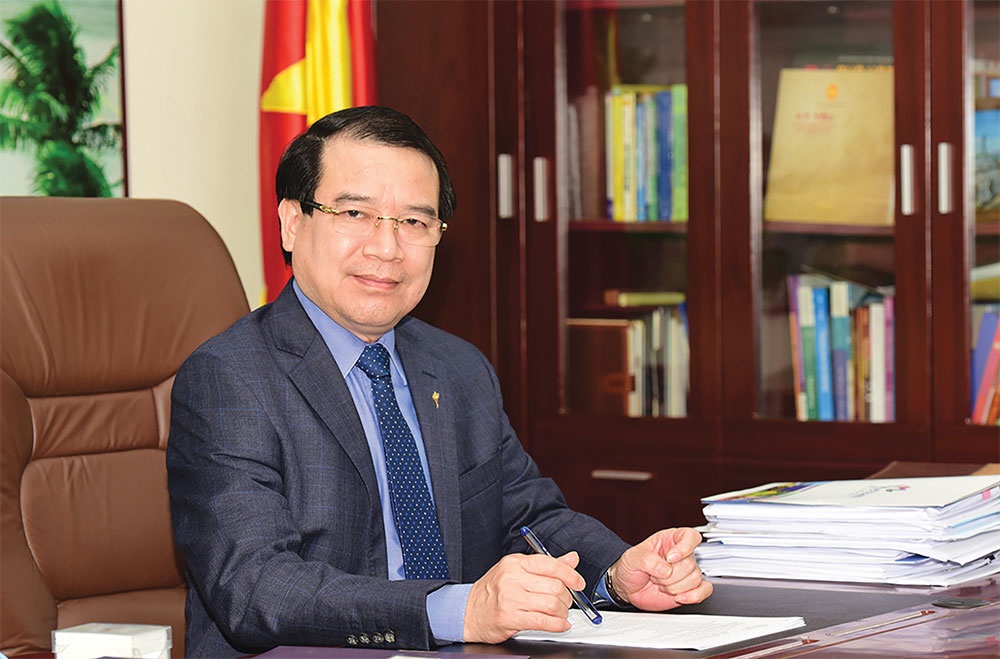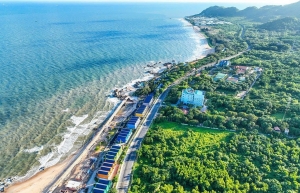A greener focus for tourism
How is green and sustainable development expressed here?
In Vietnam, many localities have now built sustainable tourism models, encouraging green tourism development ideas, using local resources, materials, and labour in tourism activities. Some businesses have pioneered the implementation of sustainable ideas, considering the tourist experience as the focus, closely linking with the government and residential communities to replicate the model.
The Vietnam National Authority of Tourism has also made a preliminary assessment of destinations that are successfully developing sustainable tourism. Besides the assessment of the management agency, it is the assessment of tourists that is objective and has practical value. In Quang Ninh province, some tourist destinations are highly appreciated by tourists for their sustainability, such as Yen Tu and Binh Lieu. In Halong’s tourism centre, to successfully convert this model, there are still many problems that need to be overcome.
 |
| Ha Van Sieu, deputy director of the Vietnam National Authority of Tourism |
What are some activities the tourism industry has carried out to promote the development of green and sustainable tourism products?
For a decade or so, the tourism industry has proactively and actively carried out many activities to implement a national strategy on green growth in tourism.
Firstly, the tourism industry has advised the Ministry of Culture, Sports, and Tourism (MoCST) and authorised agencies to develop and promulgate many industry documents, which incorporate the concepts of green tourism, developing tourism towards green growth, and sustainable tourism.
For practical activities, we and the MoCST have developed and applied sets of evaluation criteria for green tourism such as the Green Lotus Sustainable Tourism Label and Green Tourism Label.
Many green activities have also taken place under the auspices of the MoCST. In 2017, it organised Green Heritage Tourism Culture Week. The following year, it also implemented a ministry-level sci-tech programme in tourism for 2019-2021. In 2019, we also coordinated with the MoCST to organise the VITM-2019 International Fair in Hanoi with a green tourism theme.
The MoCST is assigned to develop and implement the Green Tourism Action Programme for 2023-2025, protecting the natural and social environment at key tourist destinations according to the orientation of a clean, green, beautiful, civilised, and friendly tourist destination.
With a focus on green and sustainable development, what will the tourism industry do to promote faster economic recovery?
With efforts in promoting and introducing destinations and services, along with the companionship and support of businesses, partners, and others, Vietnamese tourism will recover and grow strongly.
Since July, the tourism industry has welcomed around one million international visitors each month. Key tourist markets such as South Korea, China, Japan, North America, and Europe have also recorded recovery, and we are also accessing new sources of visitors from Malaysia, India, and more.
The open visa policy is a plus point so that in December, the number of international visitors can increase even more when international tourism enters a peak season.
The tourism industry will also encourage businesses to use renewable energy, clean fuel, new materials, and economical use of energy to reduce greenhouse gas emissions and reduce direct emissions into the environment during the development process.
Vietnam faces fierce competition in tourism attraction. What key issues must Vietnam focus on to keep ahead of the game?
The first important factor is that the tourism industry needs to overcome the imbalance in investment that is occurring in many places. Paying too much attention to investing in accommodations and restrooms but not paying attention to additional services, entertainment, culture, cuisine, and healthcare does not meet the needs of customers, nor persuade them to stay longer or return.
Currently, supply being greater than demand means that many accommodation businesses are only focusing on filling empty rooms by lowering prices along with lowering the quality of products and services, damaging the reputation of the accommodation facility and the destination as a whole.
Recruitment, training, and retraining of tourism human resources requires close coordination between training institutions, business units, and the participation of local authorities.
 | Vietnam named one of the most interesting tourism markets in Southeast Asia Hotelbeds, a platform that provides tech solutions for the tourism sector, is paying special attention to the Southeast Asian tourism market in general, and Vietnam in particular, thanks to its impressive potential. |
 | Tourism industry leads in terms of total emissions globally Tourism activities in the Asia-Pacific region are responsible for generating the most emissions, exceeding the global average, according to information shared at Markethub Asia 2023 that took place in Thailand on November 22-23. |
 | Ba Ria-Vung Tau to develop coastal urban areas Ba Ria-Vung Tau aims to host a chain of coastal urban areas with strong advantages in developing the maritime economy and the oil and gas industry. |
What the stars mean:
★ Poor ★ ★ Promising ★★★ Good ★★★★ Very good ★★★★★ Exceptional
Related Contents
Latest News
More News
- The destinations powering Vietnam’s festive season travel demand (December 04, 2025 | 18:33)
- Vietnam named among the world’s most exciting winter destinations (December 04, 2025 | 15:10)
- Phu Tho emerges as northern Vietnam’s new tourism hub (December 01, 2025 | 17:00)
- Vietjet completes Airbus A320/A321 updates ahead of deadline (December 01, 2025 | 09:49)
- Vietjet resumes Con Dao flights from early December (November 28, 2025 | 15:24)
- Free tickets, Lunar New Year promotions on offer at Vietjet Mega Livestream (November 26, 2025 | 15:32)
- Scandinavian Airlines and Vietnam Airlines broaden agreement with new routes (November 25, 2025 | 17:04)
- Halong Cruise Port welcomes over 3,100 international visitors (November 12, 2025 | 18:06)
- Vietnam.travel climbs to second place in Southeast Asia website rankings (November 12, 2025 | 18:01)
- Cat Ba named among Southeast Asia’s top island adventures (November 11, 2025 | 18:09)

 Tag:
Tag:





















 Mobile Version
Mobile Version